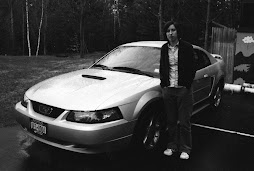Now that it's February, it's time for a new section of book reviews. I have been reading a book about the 2008 election, the much-hyped Game Change, but a trip to Barnes & Noble today got me distracted by another book, and yes, it was a sports book.
Today: The Roger Federer Story by Rene Stauffer.
This book pulled me in and didn't let me go until I had finished it five hours later, which may be surprising considering it is your basic sports biography: a clean, chronological take of the subject's career; nice quotes from colleagues and friends; important dates and scores; pictures at the center.
What made this book such a fantastic read, though, was its subject: Roger Federer. Like any good author should, Stauffer let the man's life and career speak for themselves, which is what made the book so excellent.
Stauffer put the book together as a well-written, thought-out, logically progressing package that lets the reader know what they're getting, which is important with a sportsman's career that will include a lot of record-breaking numbers and events. Even the photo spread in the middle has the best selection of shots, placed in an order that will show the reader how the story will go.
Within this excellent structure is where Stauffer weaves his revealing of Federer. The book is divided into two parts, with the first being the biography (through 2007, when the book was written) and the second being little capsules that highlight different portions of Federer that would have broken up the flow of the narrative. Part II looks at Federer as a person, as a player, etc.
Stauffer captures all the details, and he moves the story along well without dramatics yet still with a sufficient emphasis on important moments and events in Federer's career. Unlike some sports books that try to convince you that their subject overcame the most adversity known to mankind, with the subject being the meanest man around until his great transformation, overcoming huge obstacles with superhuman force, Stauffer instead approaches Federer in a very Roger-like way: humble, evenly, with a couple basic sentences that completely show how the situation was without hitting you over the head.
The details and quotes are plucked and used appropriately so that the reader knows just what is going on without being dragged into an never-ending glut of match reenactments and adolescent racket-breakings.
Stauffer reveals Federer as a person, with his story being told over the arc of a life. He uses statistics and quotes appropriately to show that the man is great, and has broken records in legendary ways, without any overkill.
Since it was written in 2007, much of Federer's latest conquests are missing, but that is one of the best features of this book. It is a good precursory overview to any first-person or end-of-career accounts yet to come, when people will look back on Federer's reign as a whole. It captures, in 2007, the allure of the moment as Federer had done much greatness but had not equivocally staked his claim as the best-ever-with-no-doubt (or had his most testing matches with his nemesis, Rafael Nadal).
There's no trumping up of the legend that is Roger Federer here; we know who this man is, we just want to be shown what his story looks like. And that is what Stauffer does.
2.04.2010
February book reviews, part 1
Subscribe to:
Post Comments (Atom)


No comments:
Post a Comment